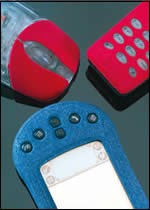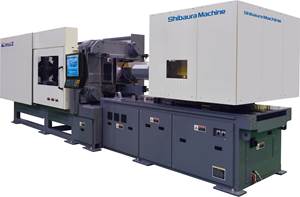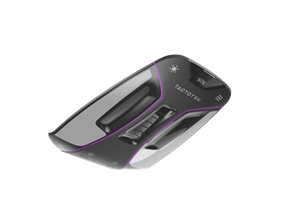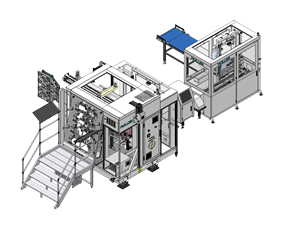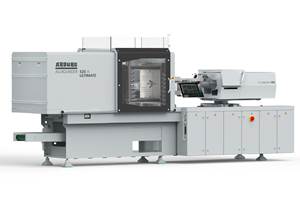Molded-In Fabrics Give New Look and Feel To Electronic Enclosures
Inclosia Solutions, a unit of Dow Chemical Co., claims to have found a better way to integrate denim, suede, leather, fur, lace, velvet and other fabrics into the surfaces of enclosures for portable devices like cell phones, laptop computers, and pocket calculators.
Inclosia Solutions, a unit of Dow Chemical Co., claims to have found a better way to integrate denim, suede, leather, fur, lace, velvet and other fabrics into the surfaces of enclosures for portable devices like cell phones, laptop computers, and pocket calculators. The product-development company says its EXO system, a variant of two-shot overmolding, is more efficient and cost-effective than conventional one-shot insert molding for mating fabrics to enclosures molded of polycarbonate, ABS, and PC/ABS.
“Performance features are no longer the sole differentiator in electronics purchasing,” says Tom Tarnowski, Inclosia Solutions’ global business manager. He argues that the visual and tactile appeal, enhanced by molded-in fabrics, is increasingly important to marketing of consumer electronics. OEMs can exploit fabric decoration to define and strengthen the brand identity of their newest products. Costs are relatively low, since the same tool can be used to incorporate many fabric and color combinations.
Overmolding refined
Fabrics have long been insert molded into parts such as automotive floor panels, door liners, and seat components. The usual approach is to insert fabric or carpet in the tool and then back it up by injecting plastic behind it. But fabric-plastic moldings generally don’t achieve quality standards required for consumer enclosures, often showing wear and fraying at the edges. Also, it is critical in electronic enclosures that the fabric be isolated from the interior, since encroachment can cause short-circuits or compromise compliance with UL flame-resistance requirements.
Tarnowski says the EXO process addresses those deficits. It begins by creating fabric blanks or preforms. These are reinforced with laminated film and adhesive backings that minimize fabric degradation, wrinkling, or misalignment during overmolding. The fabric blanks can be used either as flat inserts or can be thermoformed into 3D shapes for more complex applications.
Next, the preforms are loaded robotically into a standard two-shot molding system. The first shot is typically a rigid material that provides a solid backing for the fabric. The second shot overmolds the edges of the preform to seal the perimeter of the fabric (preventing wear at exposed points) and to incorporate molded-in anchors that more firmly fix the fabric in place. This second shot can be of a different (softer) material and/or color. It also opens the door to improved functionality, says Tarnowski. For example, overmolded layers can act as gaskets to provide a water-tight seal.
Inclosia Solutions has set up design and engineering bureaus in the U.S. and the Netherlands, and it plans to add a third in Asia shortly. The company offers electronics OEMs a one-stop source for design, material selection, tooling, prototyping, assembly, and production. For this purpose, Inclosia Solutions has formed a collaborative alliance with Eimo Oyj in Lahti, Finland, a designer and molder of enclosures for telecommunications.
Related Content
Completely Connected Molding
NPE2024: Medical, inmold labeling, core-back molding and Industry 4.0 technologies on display at Shibaura’s booth.
Read MoreDuraTech Industries Licenses TactoTek’s Injection Molded Structural Electronics (IMSE)
The custom graphics manufacturer specializing in in-mold and printed electronics now has the rights to sell, design and produce parts that use TactoTek’s intellectual property.
Read MoreNew In-Mold Labeling System Launches at K 2022
Muller Technology’s IML production cell will produce a round container in an 8-cavity mold with vison inspection and downstream automation.
Read MoreIn-Mold Labeling Applied to Medical
In collaboration with multiple partners, Arburg will showcase IML for centrifuge tubes at Fakuma 2023, eliminating printing or other downstream steps.
Read MoreRead Next
Why (and What) You Need to Dry
Other than polyolefins, almost every other polymer exhibits some level of polarity and therefore can absorb a certain amount of moisture from the atmosphere. Here’s a look at some of these materials, and what needs to be done to dry them.
Read MoreLead the Conversation, Change the Conversation
Coverage of single-use plastics can be both misleading and demoralizing. Here are 10 tips for changing the perception of the plastics industry at your company and in your community.
Read More



